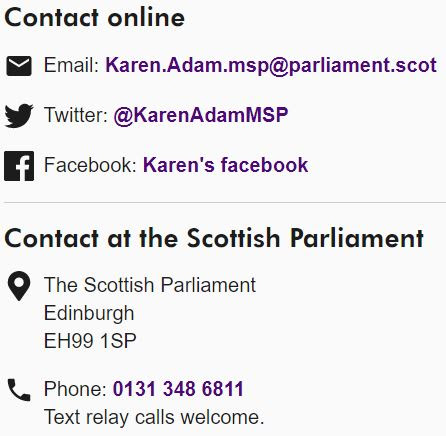The measures are part of the Scottish Government’s Climate Change Delivery Plan, published today, which sets out a vision to meet the world leading Climate Change Bill target to reduce greenhouse gas emissions by 80 per cent by 2050.
The plans will also be key to unlocking Scotland’s vast potential in renewables and creating tens of thousands of green jobs.
Four major transformational measures are envisioned:
- Low carbon electricity by 2030, through increased renewables and clean fossil fuels utilising carbon capture and storage technology;
- Wholesale adoption of low carbon road vehicles, and significant electrification of rail by 2050, with significant progress by 2030;
- Low carbon heating by 2050, with significant progress by 2030, through reduced demand, better energy efficiency and a massive increase in renewable and low carbon heating systems;
- Fewer emissions from agricultural businesses, more woodland planting and appropriate protection for Scotland’s carbon rich soils.
Climate Change Minister Stewart Stevenson said:
“We are today outlining a plan that will transform Scotland to a sustainable, low carbon society.
“Scotland will soon have the most far reaching climate change legislation in the world. That must be accompanied by action and our Delivery Plan demands action now, tomorrow, and from future generations and future governments.
“Scotland’s role in the global effort to reduce emissions will create clear economic benefits and help maintain a thriving economy. Harnessing the energy related opportunities presented by Scotland's natural capital can create tens of thousands of green jobs as we look to 2050. These are jobs for the future - jobs in our rapidly expanding renewables industry, in developing and applying clean fossil fuel technology, in energy efficiency and microgeneration and in the developing sustainable industry.
“Through our economic recovery programme we are progressing actions to create new jobs in low-carbon sectors such as in energy generation, energy efficiency and sustainable transport.”
The Climate Change Bill sets a target to cut emissions by at least 34 per cent by 2020 rising to at least 42 per cent if the EU agrees to reduce its emissions by 30 per cent by 2020. Both targets will be challenging. A global deal in Copenhagen in December will be crucial to delivering the higher target.
Action to meet the 2020 target includes:
- A reduction in energy demand and better energy efficiency and insulation;
- An increase in renewable electricity and operational carbon capture and storage;
- An action plan for the widespread development and uptake of low carbon vehicles;
- Increasingly tight building regulations leading to low carbon homes by 2017 with better building standards;
- Increased woodland planting and improved nutrient, soil and livestock management.
“The Delivery Plan shows the immense challenges we face in reaching our targets, for 2020 and 2050, but we have already started to take action – we are working on ten energy pledges that are key to reducing emissions and creating green jobs now and for the future. We are investing in public transport, creating new woodlands, pursuing a zero waste policy and next year’s budget will include a carbon assessment of every government policy.
“Drawing existing and future action together, the Delivery Plan sets out the co-ordinated approach we need to take to meet the demands of Parliament and our people and make Scotland a world leader in tackling climate change.”


 Born in 1946 and brought up in Cupar, Fife, I was educated at the local school -
Born in 1946 and brought up in Cupar, Fife, I was educated at the local school - 
















